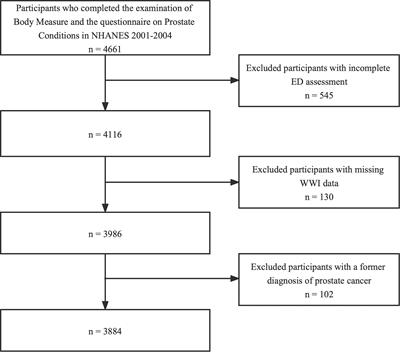paulinealbrigh
About paulinealbrigh
The Impression of Local Weather Change On International Agriculture
Climate change is some of the pressing points going through humanity right this moment, and its results on global agriculture are profound and far-reaching. As temperatures rise, weather patterns shift, and extreme weather occasions turn out to be extra frequent, the agricultural sector must adapt to ensure food security for the growing global inhabitants. This report examines the varied ways during which local weather change is impacting agriculture, the challenges that farmers face, and potential methods for adaptation and mitigation.
The results of Climate Change on Agriculture
- Temperature Will increase: Rising international temperatures have an effect on crop yields directly. Most crops have optimum temperature ranges for progress, and exceeding these ranges can lead to reduced yields. As an example, staple crops akin to wheat, rice, and maize have proven sensitivity to temperature increases, with studies suggesting that yields might decrease by as much as 10% for each 1°C rise in temperature.
- Altered Precipitation Patterns: Climate change is inflicting shifts in precipitation patterns, leading to both droughts and floods. Some regions may experience heavier rainfall, leading to flooding that may destroy crops and erode soil, whereas others may endure from prolonged dry spells that deplete water assets important for irrigation. These modifications can lead to crop failures and increased food insecurity.
- Soil Degradation: Climate change exacerbates soil degradation by means of erosion, lack of nutrients, and elevated salinity. Excessive weather occasions can strip away topsoil, while rising temperatures can result in elevated evaporation, additional depleting soil moisture. Healthy soil is essential for sustainable agriculture, and its degradation can have long-term impacts on food production.
- Pests and Diseases: Warmer temperatures and altering climates can expand the vary and lifecycle of agricultural pests and diseases. Crops that have been previously resilient to sure pests could grow to be susceptible as these organisms adapt to new situations. This may result in elevated pesticide use, which has implications for both human well being and the setting.
- Crop Selection and Biodiversity: Climate change threatens agricultural biodiversity by altering the habitats through which various crops and livestock species thrive. As farmers could also be pressured to abandon conventional crop varieties which might be no longer suited to altering circumstances, this can result in a loss of genetic diversity, which is important for resilience towards pests, diseases, and climate variability.
Challenges Confronted by Farmers
Farmers world wide are grappling with the immediate and lengthy-term challenges posed by climate change. These challenges include:
- Economic Pressures: Increased costs related to crop failures, insurance, and the need for brand new applied sciences can strain farmers’ funds. Many smallholder farmers, notably in growing nations, lack the sources to adapt to those changes, making them notably vulnerable.
- Access to Assets: Limited access to water, seeds, and agricultural expertise can hinder farmers’ capability to adapt to climate change. In areas the place irrigation is critical, competitors for water assets can result in conflicts and further exacerbate meals insecurity.
- Coverage and Support Systems: In lots of cases, government insurance policies do not adequately support farmers in transitioning to extra sustainable practices or in accessing the assets they need to adapt. This lack of support can hinder efforts to fight the impacts of climate change on agriculture.
Strategies for Adaptation and Mitigation
To address the challenges posed by climate change, various methods will be employed to advertise resilience in agriculture:
- Sustainable Agricultural Practices: Implementing sustainable farming practices corresponding to crop rotation, agroforestry, and natural farming can improve soil well being, improve biodiversity, and cut back dependency on chemical inputs. These practices may help farmers adapt to altering circumstances whereas also mitigating the results of climate change.
- Climate-Resilient Crop Varieties: Creating and selling climate-resilient crop varieties that may withstand higher temperatures, drought, and pests is essential. Research and investment in biotechnology and conventional breeding strategies can help create crops that are better suited to future situations.
- Water Management: Environment friendly water administration practices, corresponding to rainwater harvesting, drip irrigation, and using drought-resistant crops, may also help farmers cope with water scarcity. Policies that promote equitable access to water assets are additionally essential for supporting agricultural resilience.
- Training and Training: Providing farmers with schooling and training on sustainable practices, climate adaptation strategies, and resource administration can empower them to make informed choices about their farming operations. Extension services can play a significant role in disseminating information and finest practices.
- Policy Help: Governments and international organizations must prioritize agricultural resilience in their local weather motion plans. This consists of providing monetary support for farmers to adopt local weather-smart practices, investing in agricultural analysis, and growing insurance policies that promote sustainable land use.
Conclusion
The impact of climate change on international agriculture is a fancy difficulty that requires pressing attention and motion. As temperatures rise and weather patterns develop into increasingly unpredictable, the agricultural sector should adapt to ensure meals security for future generations. When you have just about any concerns concerning in which and how you can make use of erectile dysfunction treatment long term, you can contact us at our own webpage. By embracing sustainable practices, investing in research and improvement, and supporting farmers via policy and schooling, it is possible to construct a extra resilient agricultural system that may withstand the challenges posed by climate change. The future of meals security depends on our collective skill to handle these challenges head-on and work towards a sustainable agricultural landscape.

No listing found.